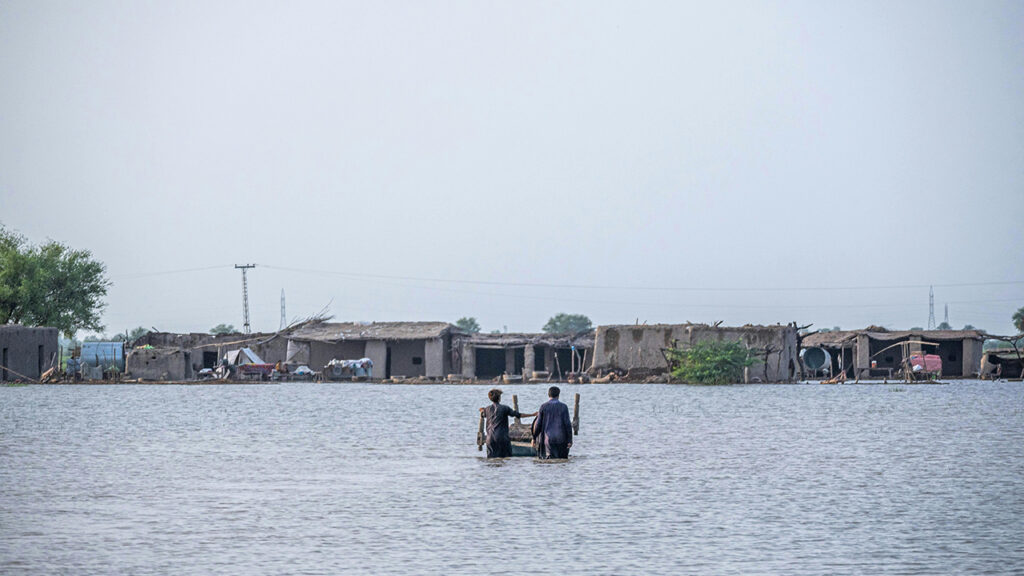
Climate change and monsoon rainfall in Pakistan
South Asia has already had a disastrous monsoon season so far this year. Three years ago, Pakistan also experienced devastating floods caused by abnormally heavy monsoon rainfall from June to August. The 2022 disaster affected millions of people, left thousands homeless, and tragically claimed more than 1,500 lives. Over two million acres of crops were destroyed, and more than 700,000 livestock were lost, creating long-lasting humanitarian and economic impacts.
In the aftermath, scientists were faced with a pressing question: to what extent did climate change influence the monsoon rainfall?
Researchers from the National Centre for Atmospheric Science and the University of Oxford have developed a new approach known as forecast-based attribution. Their findings highlight both the potential and the challenges of understanding the role of climate change in extreme weather events and humanitarian disasters with complex causes.
Forecasting monsoon rainfall
Pakistan’s climate is shaped by the South Asian monsoon, a seasonal reversal of winds that brings heavy rainfall between April and September. While monsoon rains are vital for agriculture and water supply, their intensity can vary dramatically from year to year, sometimes triggering catastrophic flooding.
In May 2022, months before the floods began, seasonal forecasts from several weather models had already indicated a heightened risk of unusually heavy rainfall across Pakistan. This raised the possibility of using forecasts not just to predict events, but also to assess the impact of climate change on them.
Forecasts had already pointed to abnormal rainfall that summer. By using those forecasts in attribution studies, we can ask how much climate change might have altered the outcome. Understanding how climate change influences today’s disasters is vital, and it also helps prepare for tomorrow.
Dr Antje Weisheimer – climate scientist at the National Centre for Atmospheric Science and University of Oxford
A new approach: forecast-based attribution
Attribution science is about answering “what if” questions. What if a storm, drought, or flood happened in a world without human-driven climate change? Would it have been weaker, less damaging, or less likely to occur?
Traditionally, such studies rely on long-running climate models that simulate many possible versions of the Earth’s atmosphere. In this case, Antje and her colleagues tried a different route: using seasonal weather forecasts as the basis for attribution experiments. The seasonal forecasts used the same state-of-the-art models as operational weather forecasts, but can predict the evolution of weather over a few months.
The team ran two sets of experiments. In the first, they reduced carbon dioxide levels in the atmosphere and adjusted the ocean temperatures to pre-industrial levels, effectively modelling a world without climate change. In the second, they increased atmospheric carbon dioxide levels and ocean temperatures to reflect the conditions of a future warmer world with enhanced climate change. Comparing these simulations gave insights into how climate change may have influenced rainfall patterns over Pakistan.
The results were not straightforward. Rainfall was reduced in both the “no climate change” and “enhanced climate change” simulations compared to reality. The year was also marked by La Niña, a natural climate pattern associated with stronger monsoon rainfall over South Asia. While climate change is altering rainfall behaviour, its precise influence on the 2022 floods remains difficult to pin down.
Antje adds: “Our results show the complexity of attribution science. Climate change is one piece of the puzzle, but natural variability, non-linear effects of the forcings, and local factors also play a big role in shaping extreme events.”
Building a clearer picture of climate impacts
Despite the uncertainties, forecast-based attribution is a promising new tool that researchers can use to provide timely insights into the climate drivers behind major disasters. This is particularly important for countries like Pakistan, where extreme weather events have profound humanitarian and economic consequences.
“As the need for climate adaptation strategies increases and the devastating impacts of extreme weather events become more apparent, attribution studies like this will be essential. They not only advance scientific understanding but also provide evidence that can guide policymakers, humanitarian organisations, and communities in preparing for future risks,” says Antje.
Further information
More information about the research can be found in the publication: CO2-induced climate change assessment for the extreme 2022 Pakistan rainfall using seasonal forecasts.
